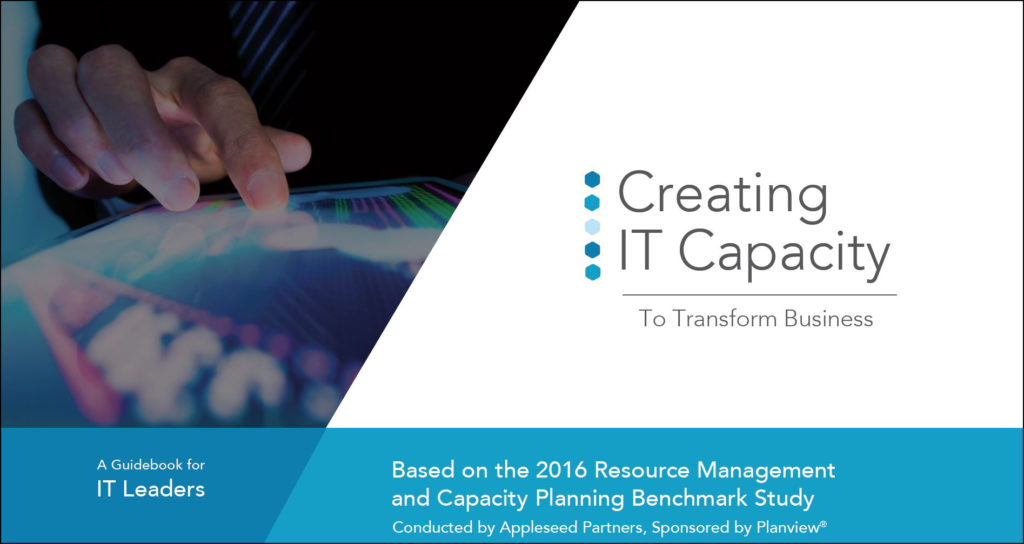
A compelling statistic emerged from the 2016 Resource Management and Capacity Planning benchmark study. Of organizations that considered themselves lower maturity when it comes to capacity planning, only 31% typically even consider capacity when deciding to take on new projects. In stark contrast, 72% of mature companies consider capacity most or all of the time.
Mais quels avantages ce dernier groupe tire-t-il de la possibilité d'évaluer la capacité lorsqu'il examine la demande entrante ? Il s'avère qu'il y a de nombreux résultats positifs à tirer de la compréhension de la capacité des ressources. J'ai mis en évidence 5 les principaux avantages rapportés par les organisations qui ont intégré une compréhension raisonnable de la capacité des ressources dans leur processus d'admission des projets.
(For a better understanding of what capacity planning actually involves, see my earlier post, What is Resource Management and Capacity Planning and Why Should You Care?)
- Plus grande agilité commerciale - Lorsque les priorités doivent changer soudainement pour répondre à un besoin émergent, la compréhension des rôles clés requis et de votre capacité à les remplir permet de prendre des décisions plus éclairées en matière de compromis et de planification. Après tout, il est difficile de déplacer des ressources si vous n'avez pas une idée claire des personnes disponibles, de leur capacité à prendre en charge de nouvelles tâches ou de ce sur quoi elles travaillent et qui pourrait peut-être être reprogrammé.
- A Proactive Staffing Strategy – Understanding your organization’s capacity at a role level, as compared with the needs of the demand pipeline, allows you to proactively set a staffing strategy that may include adding skills, hiring contractors, offshoring certain activities, bringing in interns, hiring more staff, or any number of actions that can assure effective execution of organizational strategies.
- Fewer Firefights and Less Burnout – When your people’s capacity to take on new work is considered and work is scheduled accordingly, the obvious result is fewer firefights, less overload, and more productive, satisfied resources. While change is inevitable, work can be more planful—even emergent work. It’s a simple fact that continued, excessive overtime reduces productivity and increases stress and turnover. To this end, a little bit of planning can go a long way.
- More Reliable Project Schedules – In today’s dynamic and agile world, project schedules must be fluid and adaptable. But that doesn’t excuse one from planning. On the contrary, planning is necessary even for Agile work, and that includes planning and replanning based on available capacity. This will ensure that the current project schedule is fully capacitized and thus more reliable. In contrast, planning to infinite capacity is like spinning the roulette wheel—if you hit your mark, it’ll be mostly by accident.
- The Ability to Innovate – Being able to quickly evaluate capacity to take on new innovation projects is crucial. According to the 2016 Resource Management and Capacity Planning Benchmark Study, 71% of IT leaders at higher maturity organizations are able to respond to innovation opportunities in hours or days instead of weeks or months. One participant who successfully undertook capacity planning, a senior manager with a leading consumer products company, reported going from eight weeks to only two or three days on average to evaluate capacity to take on new projects. Indeed, innovation at speed is a clear business advantage. Likewise, the ability to assess capacity to plan for innovation projects in the portfolio is just as vital.
Il devrait être clair maintenant que, collectivement, ces cinq avantages majeurs conduisent à une meilleure expérience client, à un environnement de travail plus positif et à une plus grande capacité à exécuter les stratégies. Il n'est pas exagéré d'ajouter que la visibilité de la capacité est, en fait, un facteur clé de l'agilité et de l'innovation - un véritable différentiateur dans le monde d'aujourd'hui.
If understanding resource capacity is something that is important to your organization, check out the steps to get there, download the guidebook, “Creating IT Capacity to Transform Business.”





